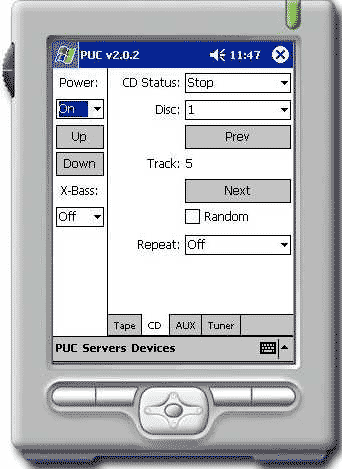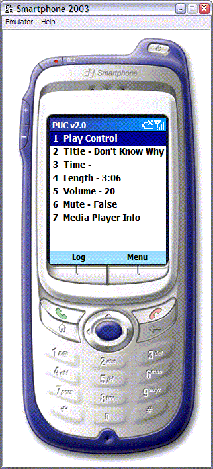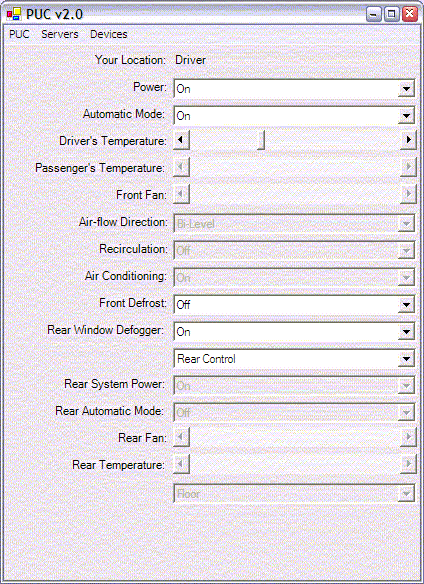|
|||||
| Overview Publications Media Funding | |||||
|
Using a Hand-Held as a Personal Universal ControllerThe Pebbles project is investigating how a hand-held computer can be used as a "Personal Universal Controller". Personal digital assistants (PDAs) like the PocketPC and Palm Pilot are becoming increasingly ubiquitous, and with wireless technologies such as BlueTooth and IEEE 802.11, they will be in close interactive communication with other devices. Furthermore, cell-phones and pagers, which primarily used for communication, are increasingly becoming programmable. We are investigating how these kinds of hand-held devices devices can be used to control all kinds of home, office and factory equipment. The concept is that when users point their own hand-held at a light switch, at a photocopier in an office, at a machine tool in a factory, at a VCR at home, at a piece of test equipment in the field, or at almost any other kind of device, the device will send to the hand-held a description of its control parameters. The hand-held uses this information to create an appropriate control panel, taking into account the properties of the controls that are needed, the properties of the hand-held (the display type and input techniques available), and the properties of the user (what language is preferred, whether left or right handed, how big the buttons should be based on whether the user prefers using a finger or a stylus). The user can then control the device using the hand-held. The device will not need to dedicate much processing power, hardware, or cost to the user interface, since it will only need to contain a description of its capabilities and storage for the current settings, along with hardware for wireless communication. The hand-held programs will use intelligent "model-based" techniques to create useful and appropriate interfaces that are customized for each user. Furthermore, though a collaboration with the Universal Speech Interfaces project at CMU, we are demonstrating that the same specification can be used to generate a speech interface, and then the appliance can be controlled using speech and/or a graphical user interface. In our preliminary study, using the Palm and PocketPC interfaces shown below were twice as fast and resulted in one-fifth the errors compared to the manufacturer's interface. See the publications in this section.
Note that you cannot use any of the Pebbles software to control real applications (other than a PC) at this time. Connecting PUC to AppliancesWe are investigating various ways to connect our PUC to appliances, including the following:
The PUC system cannot be used to control real appliances today. Some systems for using handhelds as remote controls today include:
|
||||
|
Copyright © 2009 Carnegie
Mellon University
Maintained by Brad Myers Site designed and developed by Htet Htet Aung This page has been visited 425362 times since Jan 04, 2005 |
|||||





 UPnP: Universal Plug and Play
UPnP: Universal Plug and Play  HAVi:
Home Audio Video Interoperability
HAVi:
Home Audio Video Interoperability